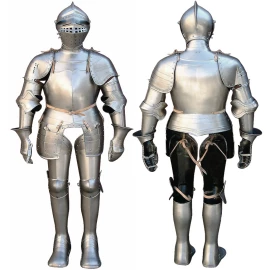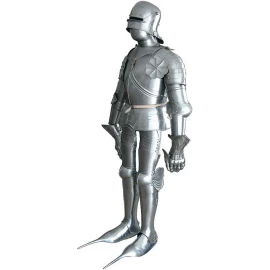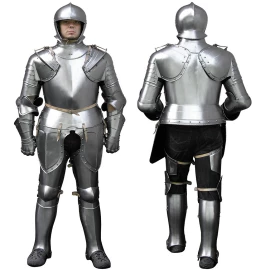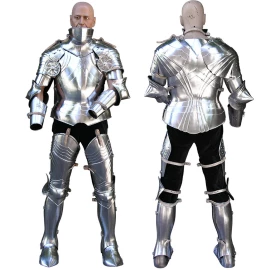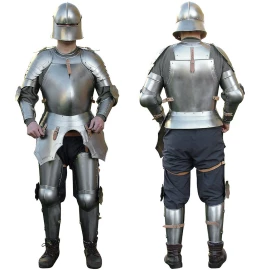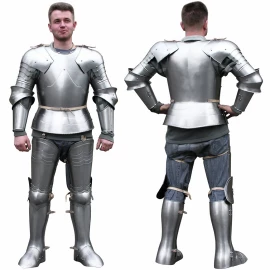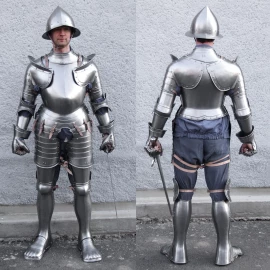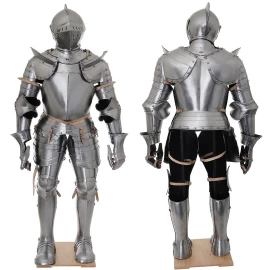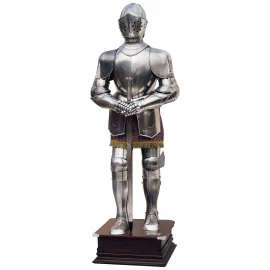Full Plate Armour
Since the 15th century, most parts of the human body have been fitted with specialised steel pieces, typically worn over linen or woollen underclothes and attached to the body via leather straps and buckles and points. Mail protected those areas that could not be fitted with plate; for example, the back of the knee. Well-known constituent parts of plate armour include the helm, gauntlets, gorget or 'neckguard', breastplate, and greaves worn on the lower legs.
Filter products
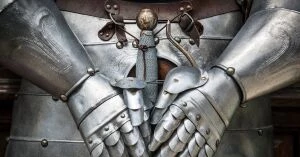
If you want to keep your sword, helmet or plate armour in perfect condition for as long as possible, occasional maintenance is required. Sometimes, touching your armour with your hands is enough to expose your gear to harmful moisture. However,…
Full Suits of Armour
For the elite, full-body plate armour was custom-made for the individual. Most armour was bought off the shelf and some was modified to fit the wearer. The cost of armour varied considerably with time and place as well as the type of armour, coverage it provided and the cost of decoration. In the 8th century a suit of Frankish mail had cost 12 oxen; by 1600 a horseman's armour cost 2 oxen. A typical suit of full plate harness cost around 1 pound sterling in 14th century England and a man-at-arms in the same period made 1 shilling per day and so his armour cost about 20 days pay. Plate armour was limited to those who could afford it: the nobility, landed classes and mercenary professional soldiers, who did most of the fighting in the Medieval period. Soldiers of lower standing generally wore less armour. Full plate armour made the wearer virtually impervious to sword blows as well as providing significant protection against arrows, bludgeons and even early firearms. Sword edges could not penetrate even relatively thin plate (as little as 1 mm). Also, although arrows shot from bows and crossbows and bullets fired from early firearms could occasionally pierce plate especially at close range, later improvements in the steel forging techniques and armour design made even this line of attack increasingly difficult. By its apex, hardened steel plate was almost impregnable on the battlefield. Knights were instead increasingly felled by polearms such as the halberd and blunt weapons such as maces or war hammers that could send concussive force through the plate armour resulting in injuries such as broken bones, organ haemorrhage and/or head trauma. Another tactic was to attempt to strike through the gaps between the armour pieces, using daggers, spears and spear points to attack the man-at-arms' eyes or joints.

